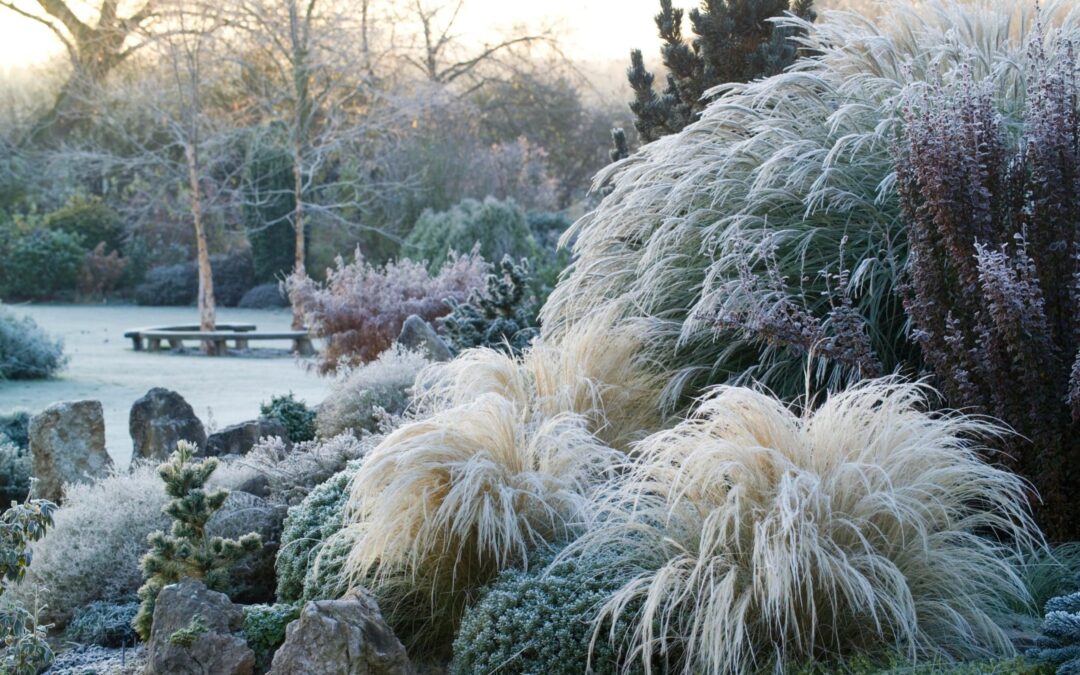Wow. We’re more than halfway through October and no sign of a hard frost! The old saying goes “No frost until after the full moon in October.” The long range forecasts do predict some pretty chilly temps next weekend. So we’ll see if the adage is true. For now, just sit back and enjoy the ride because predictions are calling for an El Nino year. That means a cold and wet winter. So no complaining about raking as it looks like there may be plenty of shoveling in our future!
If you have hybrid roses, loosely tie the canes together and prune them back a bit, then surround the plant with a rose collar. Have some unfrozen topsoil or bark mulch handy. Once the ground freezes, mound about 8 to 10 inches of mulch over the crown of each plant. Although late November is usually a good guess for timing, you might want to wait until mid December. Your hardy shrub roses won’t require this kind of protection. Wait until spring to prune them and though it isn’t necessary, an added layer of mulch certainly won’t hurt.
And using the same timing as the roses, go ahead and apply winter mulch around your more tender perennials and shrubs. Pay special attention to those Zone 5 plants like butterflybush, big-leaf hydrangea and blue-mist spirea. Leaves from your trees and grass clippings are not a good choice. Marsh hay or evergreen boughs make the best protective mulch. The idea behind the practice is to use materials that will keep the air spaces intact and not mat down.
You should be done transplanting and dividing perennials by now. If you have anything still unplanted, consider mulching them in a sheltered spot for the season. You’ll have all winter to figure out where to plant them in the spring. Clean up and discard foliage from any plants that had mildew or leaf spot problems during the growing season. Do not put this material in your compost pile as it might re-infect your garden in the spring.
Protect any young, thin-barked trees from frost-cracking by applying a paper tree wrap to the trunks. If you have had problems with rodents or deer, use the sturdier plastic tubes. This is temporary though. Be sure to mark your calendars to remove any tree wraps in late March or early April. And use some lengths of old nylon stockings to tie up the multiple leaders of arborvitae and upright junipers. This can prevent any splitting caused by heavy snow.
When the temperatures do begin to fall, apply an anti-desiccant like Wilt-Pruf to your broadleaf evergreens, being sure to follow product directions. Moisture can be lost throughout the winter from the foliage of rhododendrons, boxwood and hollies, leaving you with golden-brown, crispy plants in the spring. If these plants are sited in a windy spot, or afternoon sun, think about putting up a burlap screen to protect them.
Wait until January or February to do dormant-season pruning of trees and shrubs. Remember that spring flowering trees and shrubs have already set flower buds for next spring, so any pruning will remove blossoms. And unless they are creating a hazard, leave your evergreens alone. Late pruning can cause serious winter damage.
Plants that have gone dormant can be trimmed back now or left until early spring. Perennial silhouettes in the winter garden can be very attractive though and provide cover and food for birds. Grasses and coneflower heads in particular add a nice dimension and texture. So consider leaving them intact until spring.


